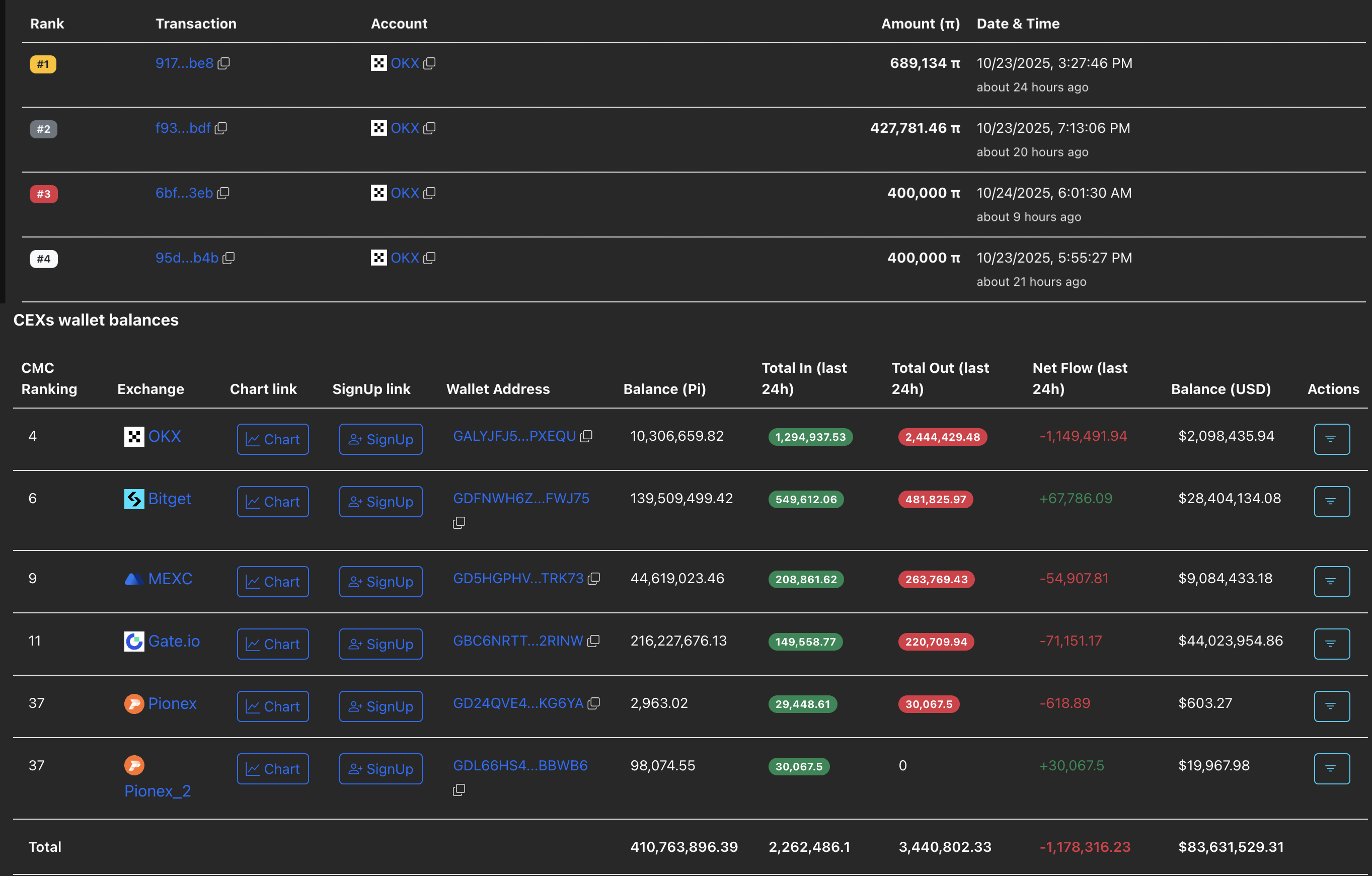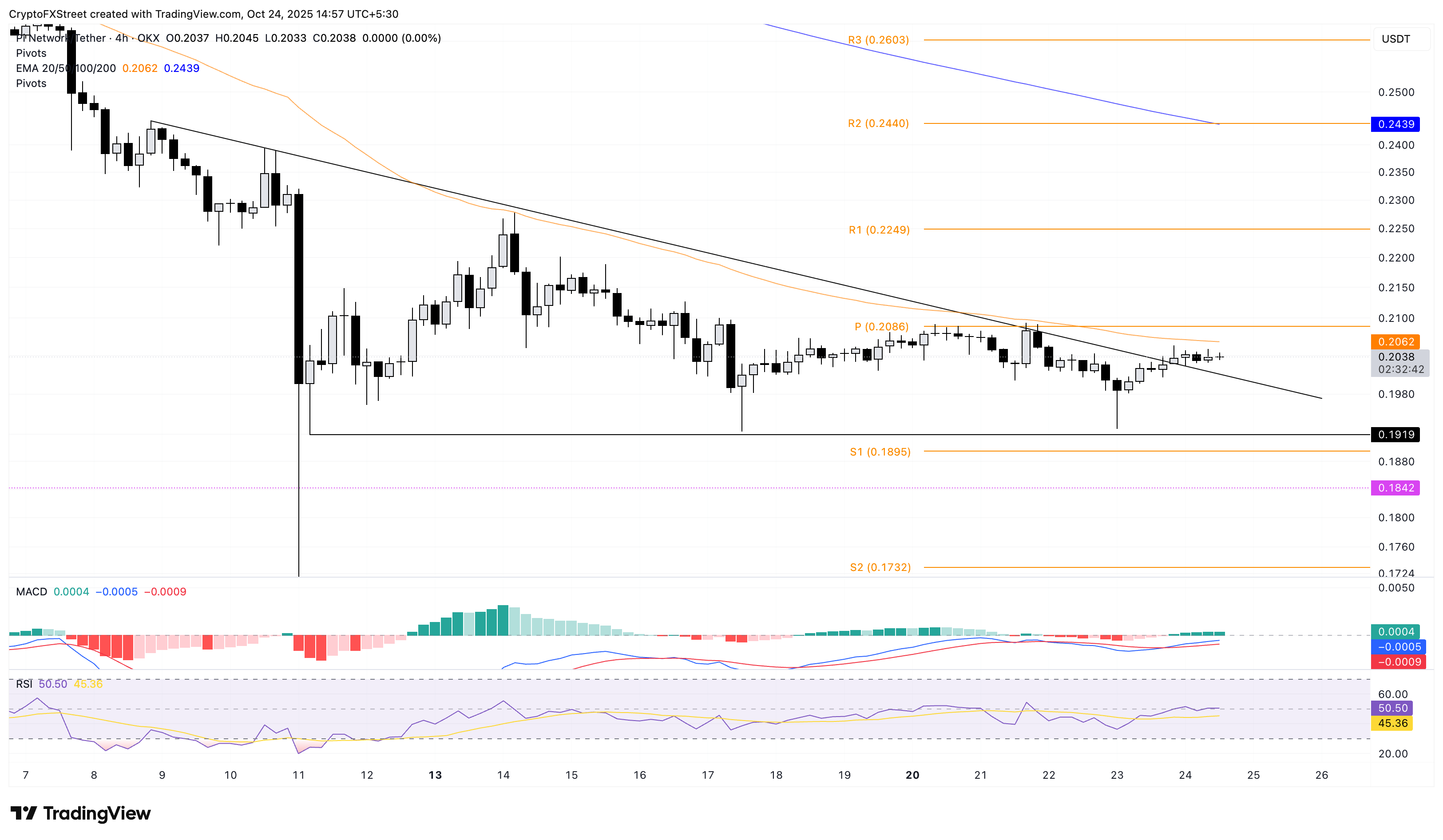Pi Network Price Forecast: PI points to crucial resistance as migration drives demand
- Pi Network faces opposition at the 50-period EMA on the 4-hour chart after a descending triangle pattern breakout.
- Around 2.70 million Pioneers have migrated to the mainnet, out of the 3.36 million users who recently completed KYC verification.
- CEXS outflows of over 1.17 million PI suggest an increase in on-exchange demand.
Pi Network (PI) steadies on Friday near the critical 50-period Exponential Moving Average (EMA) on the 4-hour chart, after surpassing a local resistance trendline. The breakout move aligns with the announcement of 2.70 million Pi Network users, also called Pioneers, migrating to the mainnet. With optimism surrounding Pi Network, outflows from Centralized Exchanges (CEXs) wallets have surpassed 1.17 million PI in the last 24 hours, suggesting a surge in demand.
Pi Network migration boosts demand among users
Pi Network announced successful Know Your Customer (KYC) verification of 3.36 million additional Pioneers, resulting in a near 3% jump in PI token on Thursday. KYC verification allows Pioneers to transfer PI tokens from testnet to mainnet, and aligns with the network’s aim to build an inclusive community of real individuals. Of the 3.36 million KYC-verified users, 2.69 million have migrated to the mainnet.
Apart from these verified users, an additional 3 million users are in the tentative KYC group and might receive a camera‑based face verification request before the final mainnet check.
The surge in Pi Network mainnet users, with an additional 3 million Pioneers in line, could accelerate the network's adoption and utility.
On the other hand, demand for the PI token has increased significantly over the last 24 hours. PiScan data shows that four of the largest transactions on the network were withdrawals of over 400,000 from the OKX exchange. Meanwhile, the total outflow from CEXs' wallet balances amounted to 1.17 million PI tokens. A surge in outflows from exchanges reduces supply pressure, increasing the upside potential.

CEXs wallet balances. Source: PiScan
Pi Network’s breakout rally faces multiple resistances
Pi Network exceeds a local resistance trendline, confirming the breakout of a descending triangle pattern on the 4-hour chart. Still, the mobile mining cryptocurrency is facing resistance from the 50-period EMA at $0.2062, struggling to extend its breakout rally.
Nevertheless, a decisive close above this dynamic resistance would experience resistance at the Pivot Point at $0.2086, followed by the R1 Pivot Point at $0.2249.
Technical indicators on the 4-hour chart signal a bullish shift as the Moving Average Convergence Divergence (MACD) rises towards the zero line, after crossing above the signal line. At the same time, the Relative Strength Index (RSI) at 50 is neutral, bouncing off the oversold zone, indicating fading bearish pressure.

PI/USDT 4-hour price chart.
Looking down, a reversal from the 50-period EMA could retest the $0.1919 support level, marked by a 4-hour candle low on October 11, nullifying the breakout rally.
Bitcoin, altcoins, stablecoins FAQs
Bitcoin is the largest cryptocurrency by market capitalization, a virtual currency designed to serve as money. This form of payment cannot be controlled by any one person, group, or entity, which eliminates the need for third-party participation during financial transactions.
Altcoins are any cryptocurrency apart from Bitcoin, but some also regard Ethereum as a non-altcoin because it is from these two cryptocurrencies that forking happens. If this is true, then Litecoin is the first altcoin, forked from the Bitcoin protocol and, therefore, an “improved” version of it.
Stablecoins are cryptocurrencies designed to have a stable price, with their value backed by a reserve of the asset it represents. To achieve this, the value of any one stablecoin is pegged to a commodity or financial instrument, such as the US Dollar (USD), with its supply regulated by an algorithm or demand. The main goal of stablecoins is to provide an on/off-ramp for investors willing to trade and invest in cryptocurrencies. Stablecoins also allow investors to store value since cryptocurrencies, in general, are subject to volatility.
Bitcoin dominance is the ratio of Bitcoin's market capitalization to the total market capitalization of all cryptocurrencies combined. It provides a clear picture of Bitcoin’s interest among investors. A high BTC dominance typically happens before and during a bull run, in which investors resort to investing in relatively stable and high market capitalization cryptocurrency like Bitcoin. A drop in BTC dominance usually means that investors are moving their capital and/or profits to altcoins in a quest for higher returns, which usually triggers an explosion of altcoin rallies.



